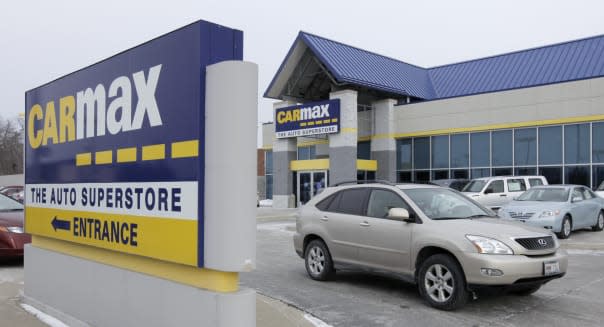4 Key Trends in Used Cars Learned From CarMax

CarMax (KMX) reported quarterly results last week. The market didn't like it. Shares of the leading used-car dealer fell by 4 percent on Friday, carrying over into another 4 percent loss on Monday. It wasn't a bad report -- Wall Street was just holding out for a better overall performance as sales and earnings fell short of expectations.
CarMax's report offers a great glimpse into trends of the resale market, which tops the 16 million or so new cars sold every year. Let's go over a few things that CarMax was taught us this time around.
CarMax's Model is Gaining Popularity
Used-car salesmen used to have a shady reputation, but today's youth will probably have to stream a copy of "Used Cars," a 1980 film with Kurt Russell, to get that feeling.
No longer do we automatically think of slick-talking salesmen trying to unload lemons. CarMax offers an experience that's a lot closer to new car showrooms with clean floors, massive selection and sales reps that don't necessarily have a hidden agenda because the cars are sold at haggle-free prices. What you see is what you will pay.
Potential car buyers seem to like it that way. CarMax claims that its market share has risen by 17 percent over the past year in terms of its core product of selling cars that are no more than 10 years old.
Folks Prefer Newer Used Cars
The economy's improving, but that doesn't mean that everyone can afford a new car. In fact, CarMax posted its best store-level comps growth in terms of the number of vehicles sold at its lots since 2002. It sold 12 percent more used cars at the individual store level last year than it did in 2012.
However, these folks still don't want to drive really old cars. CarMax revealed during its conference call that 70 percent of its sales are for vehicles that are 4 years old or newer.
It's Getting Hard for Drivers with Bad Credit to Get the Keys
One of the negative surprises in CarMax's report is that the number of car sales going through third-party subprime lenders -- after inching higher in each of the three previous quarters -- clocked in flat at 17 percent of its sales. An optimist would spin this as a positive, arguing that it means that used-car buyers grew more responsible during the holiday quarter ending in February.
However, since sales were soft, Reuters and others point to the lack of subprime lending as the culprit that resulted in CarMax's performance falling short of expectations. Buyers turn to subprime lenders and their higher rates when they get shot down everywhere else. But this time it seems as if they were getting shot down there, too.
CarMax is Going to Keep Growing
CarMax opened a record 13 new showrooms in fiscal 2014. It is looking to open 13 stores this new fiscal year, and it is targeting 10 to 15 new superstores in each of the next two years.
%VIRTUAL-article-sponsoredlinks%The outlook is rosier than the market's reaction to CarMax's performance. Used cars will continue to be popular. And with the average age of the car in this country clocking in at 11.4 years -- ancient by historical standards -- there is plenty of pent-up demand to either buy a new car or make better use of that money by investing in a lightly used secondhand vehicle.
Analysts see sales growing 12 percent at CarMax this new fiscal year as well as for fiscal 2016. CarMax's ability to gain share in a market that should continue to grow in most economic climates should bode well for the stock's chances to bounce back. It knows where it needs to go, now it just needs to make sure that its stock shifts out of reverse.
Motley Fool contributor Rick Munarriz has no position in any stocks mentioned. The Motley Fool recommends CarMax and owns shares of CarMax. Try any of our newsletter services free for 30 days.

